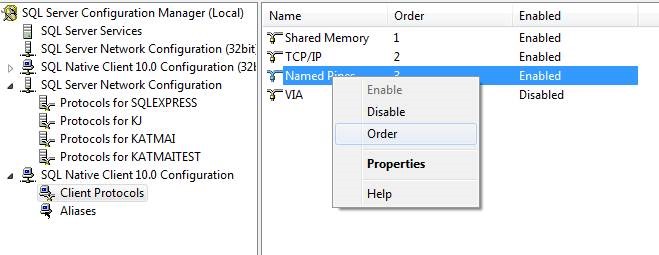Manually Publish Sql Spn In Active Directory
Active Directory; SQL running under 'Local System', but SPN not registering. We will need to do a manual registration of SPNs in certain cases but not when the service is running under 'Local System'. I’ve seen SQL SPN registrations fail for a variety of reasons that include.
I am trying to activate SPN with that codes and getting this errors? Whats the problem? The SQL Server Network Interface library could not register the Service Principal Name (SPN) for the SQL Server service. Error: 0x54b, state: 3. Failure to register an SPN may cause integrated authentication to fall back to NTLM instead of Kerberos. This is an informational message. Further action is only required if Kerberos authentication is required by authentication policies.

Setspn -A MSSQLSvc/**.***.***.**:1433. When the SQL Server service account is configured to use the local system account, the server will automatically publish the SPN for you. However, a SQL Server best practice is to change the startup account from local system to a domain user account to better secure the SQL Server instance. If you're using a domain user account to run the SQL Server service, you have to manually create the SPN for the account in Active Directory.
Once created, you can view the SPNs registered using an ADSIEdit console. Note: To use the SetSPN utility, or to open an ADSIEdit MMC console, you must first install the Microsoft Windows Server support tools. These tools are included in the support tools folder on both Windows 2000 Server and Windows Server 2003 CDs. To install the Windows Server support tools, navigate to SUPPORT TOOLS on the server's installation CD and run suptools.msi. To register the SPN for the domain user account in Active Directory for the default instance of SQL Server (assuming you haven't changed the port it is listening on) you can use the following syntax: Setspn -A MSSQLSvc/:1433 The trick here is that you have to do this twice. You need to register the SPN for both the SQL Server computer's NetBIOS name and FQDN to allow Setup to succeed and for the site to operate properly after it is installed.
Download I Am The Bread Of Life sheet music instantly - Piano Accompaniment,Oboe,Soprano Voice,Alto Voice,Choir,TTBB sheet music by Stephen DeCesare: Exultet Music. Purchase, download and play digital sheet music today at Sheet Music Plus. Sep 06, 2015 The Notre Dame Folk Choir singing 'I Am the Bread of Life.' Follow us on Twitter and Instagram @ndfolkchoir Find us on Facebook - The University of Notre Dame Folk Choir. Download song i am the bread of life in choir.
When using a SQL Server named instance to host the site database, and using a domain user account as its start up account, you must register the SPN for the named instance in Active Directory. When registering the SPN for a SQL Server named instance, the syntax is the same as creating one for the default instance--the named instance is detected by the port number it responds to and is not specified as part of the SQL Server name (just like IIS and the default Web site, you can't use the same port that the default instance uses for a named instance of SQL Server). So, the command to register the SPN for the domain user account running a named instance using port 1400 (1400 is just a random port I picked out of my head, not a recommendation) would be: Setspn -A MSSQLSvc/:1400 Once again, you have to do this twice, once for the SQL Server's NetBIOS name and once for the SQL Server's FQDN. Troubleshooting Tips There is a known issue when running the stand-alone prerequisite checker on named instances in case you see an error when running that that says you must specify a valid NetBIOS host name.
To test the named instance before beginning the install, you can use the Setup command line: Setup /Prereq /Pri /SQL Also, when running Setup to install the site database on a remote SQL Server named instance, the SQL Server browser service must be running when Setup goes looking to validate it or else Setup will fail. I'm just brainstorming here, but this might be a Service Principal Name issue. Have you set this on both nodes of the WNLB. For Kerberos authentication to work, Service Principal Names (SPNs) must be registered for IIS When using IIS 6.0 or 7.0 for icon or OSD file retrieval and streaming of packages, for Kerberos authentication to be enabled, the SPNs must be registered as follows: • On the IIS server, run the following commands by using the SETSPN.EXE Resource Kit tool. The server fully qualified domain name (FQDN) must be used. Setspn -r SOFTGRID/ Setspn -r HTTP/ See: http://technet.microsoft.com/en-us/library/cc817171.aspx.
I'm finding contradictory information for how exactly to format SPNs (Service Principle Names) to get the proper Kerberos connections, and how many I need for each SQL instance. Contains the following: Beginning with SQL Server 2008, the SPN format is changed in order to support Kerberos authentication on TCP/IP, named pipes, and shared memory.
Query Spn In Active Directory

View Spn In Active Directory
The supported SPN formats for named and default instances are as follows. • Named instance: MSSQLSvc/FQDN:[port instancename] • Default instance: MSSQLSvc/FQDN:port MSSQLSvc/FQDN The new SPN format does not require a port number. This means that a multiple-port server or a protocol that does not use port numbers can use Kerberos authentication.